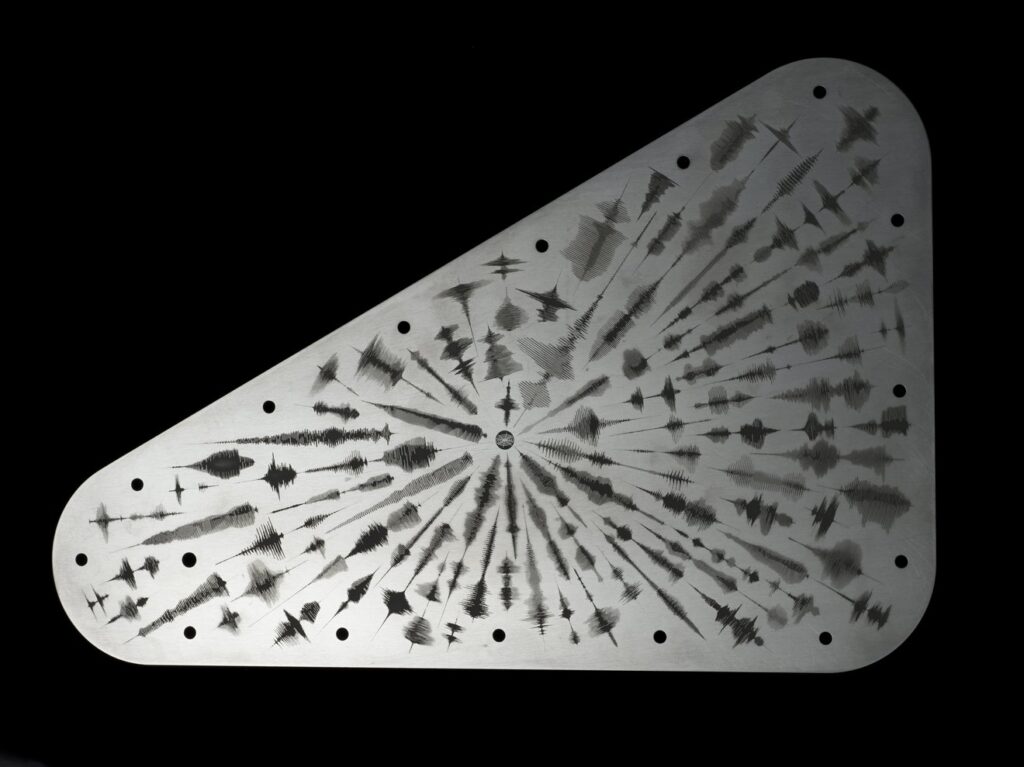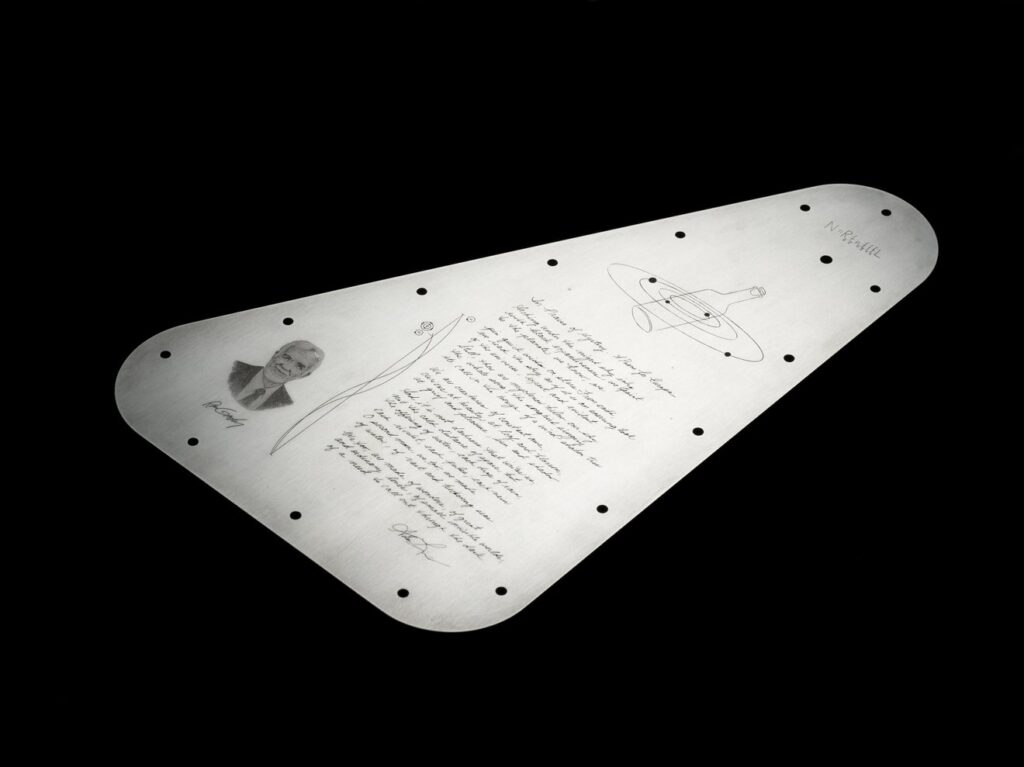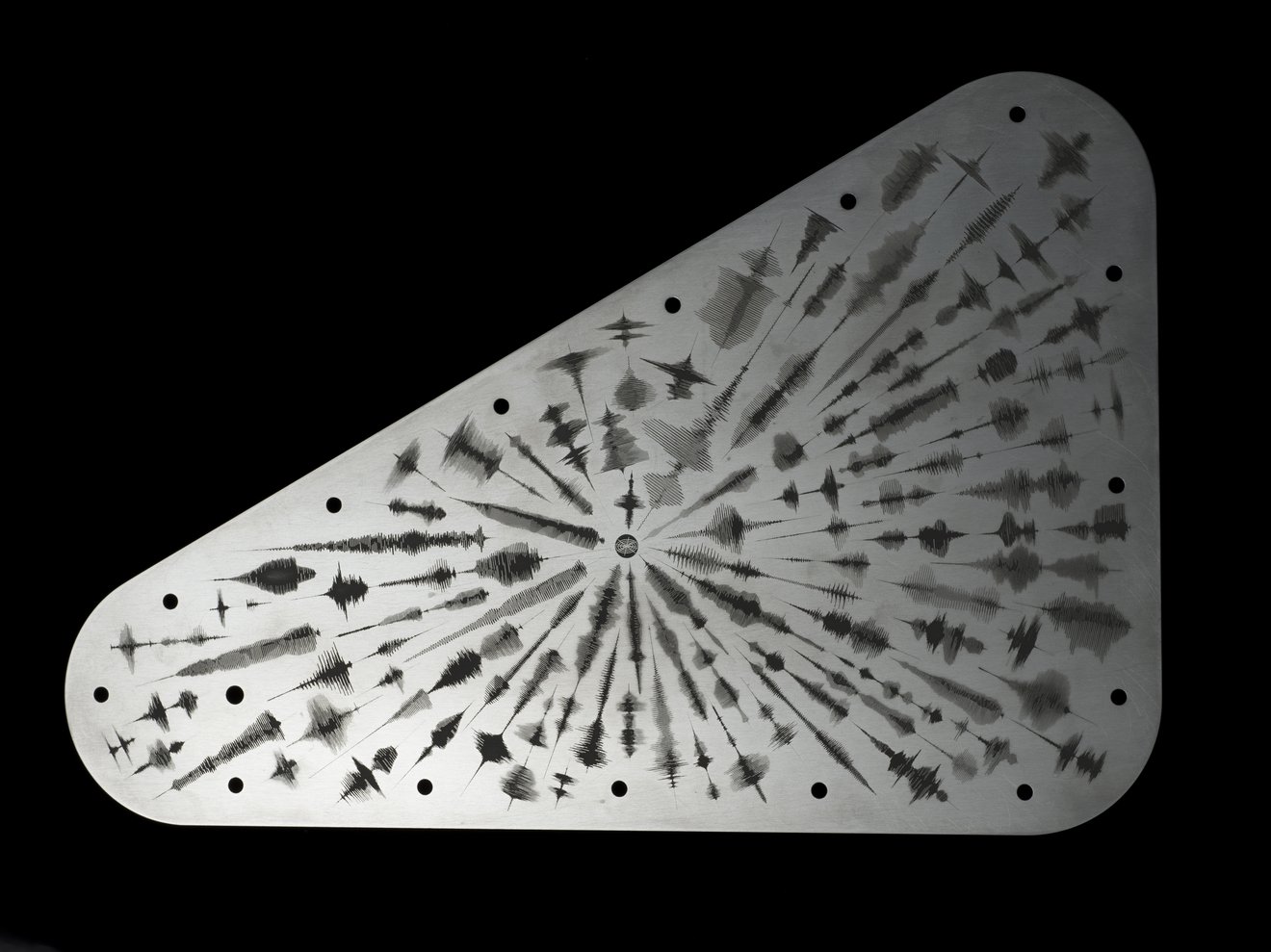Introduction to Europa Clipper’s Inspirational Journey
Continuing NASA’s legacy of dispatching messages of hope and inspiration into the cosmos, the agency has devised a unique tribute for the Europa Clipper mission. Set to embark towards Jupiter’s moon, Europa, this mission seeks to explore a celestial body that harbors a vast ocean beneath its icy exterior, harboring over twice the volume of Earth’s combined oceans. A distinct triangular metallic plaque affixed to the spacecraft celebrates this profound bond with Earth through multiple elements.

A Symbolic Artifact of Earth’s Wonders
Central to this emblematic piece is the etching of Ada Limón’s “In Praise of Mystery: A Poem for Europa,” penned by the U.S. Poet Laureate herself, alongside a microchip bearing over 2.6 million names from individuals around the globe. This chip lies at the heart of an artwork depicting a bottle floating within the Jovian system, symbolizing the “Message in a Bottle” initiative that encouraged public participation in this cosmic venture.
A “Golden Record” for Europa
Crafted from tantalum and measuring approximately 7 by 11 inches, the plaque is adorned with designs that underscore our planet’s linkage to Europa. It incorporates the term “water” in 103 languages, transformed into waveforms etched onto its surface, emanating from a depiction of the American Sign Language gesture for “water.” This approach draws inspiration from the Voyager Golden Record, aiming to encapsulate the diversity and richness of life on Earth through a mosaic of sounds and images.
The Voyage’s Profound Message
Lori Glaze, the Planetary Science Division’s director at NASA, emphasized the profound significance encapsulated in the Europa Clipper’s vault plate. It merges the quintessence of human achievement across the spectrum of science, technology, education, art, and mathematics, illustrating the universal necessity of water for life and Earth’s connection to the enigmatic ocean world awaiting exploration.
Reaching Out to the Cosmos
Upon its expected arrival in 2030, after traversing 1.6 billion miles, Europa Clipper will commence its detailed examination of Europa. Its mission is to ascertain the moon’s potential for supporting life through the analysis of its subsurface ocean, icy shell, atmosphere, and space environment, shielded from Jupiter’s intense radiation by a specially designed metal vault.
Engraved Insights and Homages
The inward side of the plaque features the Drake Equation, a theoretical framework posited by Frank Drake in 1961 to evaluate the odds of encountering advanced extraterrestrial civilizations. This inclusion underscores the mission’s astrobiological aspirations. Additionally, it showcases artwork pertaining to frequencies deemed suitable for interstellar communication, alongside a tribute to Ron Greeley, a pioneer in planetary science whose early endeavors were crucial to conceptualizing the Europa Clipper mission.

Conclusion: A Mission Filled with Anticipation and Inspiration
Robert Pappalardo, the Project Scientist at NASA’s Jet Propulsion Laboratory, reflects on the profound contemplation and inspiration imbued in both the mission and the plaque design. As the Europa Clipper undergoes final assembly, the anticipation for the revelations this mission will uncover about Europa’s aquatic world intensifies. The mission represents not only a significant scientific endeavor but also a bridge connecting humanity with the vast mysteries of the cosmos.
The Scientific Quest of Europa Clipper
Europa Clipper’s primary objective is to discern whether Europa possesses regions beneath its icy facade capable of supporting life. It aims to elucidate the thickness of the ice shell, investigate the ocean’s composition, and characterize the geological features, offering invaluable insights into the astrobiological potential of habitable worlds beyond our own.
